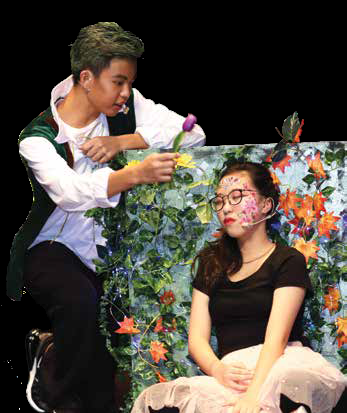“You’re last again!” the boy jeered. Tom’s heart started to beat wildly and his insides began to churn. He clenched his fist, about to retaliate, but he froze instead. What followed next was an overwhelming sense of failure. Speechless and not knowing how to defend himself, he leaves the scene, with his head hung low. Three words were all it took to send Tom’s day on a downward spiral.
Being able to manage one’s emotions and navigate social interactions are essential skills for all children. An argument can be made that children with dyslexia require these skills even more. They have been documented to have a higher risk of mental health issues (Livingston et al., 2018). Moreover, a Singapore study reported that students with dyslexia had a greater chance of ending up with social emotional problems. (Xuan, 2017). Lastly, some of these children were found to have weaker social skills and poorer quality of friendships. Taking all these into consideration, we cannot presume that these children will naturally develop adequate social emotional skills on their own. In fact, it has been established that we can impart these crucial skills through an approach called Social Emotional Literacy.
Social Emotional Literacy (SEL) is the processing of learning how to discern and regulate one’s feelings as well as build and maintain healthy relationships. According to the Collaborative for Academic, Social and Emotional Learning (CASEL), SEL is fostered by developing five competencies that are necessary for general wellbeing. These skills consist of (a) Self-awareness which enables individuals to recognise one’s strengths and weaknesses while developing a positive self-concept, (b) Self-management the ability to control one’s emotions and impulses while working towards personal goals, (c) Social awareness, the understanding and respecting of other points of view, (d) Relationship skills and (e) Responsible Decision Making (Osher et al., 2016). Research has suggested that social and emotional skills can be learnt and imparted through existing SEL programs. Youths who participated in SEL programs improved in their interpersonal and emotional abilities, possessed a more positive outlook and exhibited increased levels of prosocial behaviour (Durlak et al., 2011). These outcomes led to better mental health and school grades.

Drama is an excellent tool to introduce and sustain social-emotional competencies. As an art form, it is greatly associated with human interaction. It utilises multiple modes of communication to convey meaning (Palechourou and Winston, 2012). Individuals are led to conceptualise, portray and contemplate upon a variety of emotional experiences. Students take on personas and attempt to solve real life problems in this imaginary world. It is this unique feature of drama that allow participants to broaden their mind-sets and grow as individuals. Learning through participation and interaction (Winston,2012), acquiring deepen reflections as the students create meaning for themselves (Bolton, 1998) and the flexible structure of the process allows teachers to adapt the lesson to students’ questions or ideas quickly (Chang, 2012). Hence, learning, in this manner seems like a playful process (Winston, 2012) and will lighten the load of struggling learners
At DAS, we believe that a drama arts curriculum is strengthened when intentional steps are taken to enhance social and emotional learning. This can be done through mindfully crafting the activities in class and linking them to the following areas:
1. Self-Awareness
• Learning drama can increase awareness of oneself.
• Students are guided to understand and represent a range of emotions.
• Takes on roles of imaginary characters and embark on an emotional journey.
• In the process, students understand that emotions are not bad in themselves, but what matters is how they are managed.
2. Self-Management and Relationship skills
• Through games that require focus and concentration.
• Explicit skills such as active listening, turning taking and calming down are reinforced as the students learn to operate as a team.
• When working on a performance piece, students have to resolve relationship differences to showcase their best efforts.
• Lastly, through the delegation of roles and setting of goals, students learn responsibility and resilience.
3. Social Awareness
• A careful selection of themes and topics allow students to become exposed to an array of concepts.
• Students are guided to understand different perspectives and appreciate diversity.
• Students are encouraged to predict and evaluate their emotional responses.
• Builds empathy and greater awareness of the people around them.
So how would Tom have handled things differently if he had better social-emotional capabilities? Firstly, he would have an awareness of his strengths and weaknesses and know that even if he is last in this game, he is still good in many other areas. Next, he would be able to recognise his response towards the jeering and calm himself down. Ideally, Tom would also know that this individual is up to no good. He would be able to respond to the jeerer directly by either ignoring his comment or saying, “It's ok.”
The Speech & Drama Arts programme is being offered in Bedok and Bishan Learning Centre.
To find out more on SDA classes, click here.
Corinne Ang
Senior Educational Therapist, Main Literacy Programme + Speech and Drama Arts
RETA Member
Sengkang Learning Centre
Learn more about Corinne!
